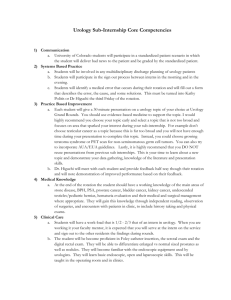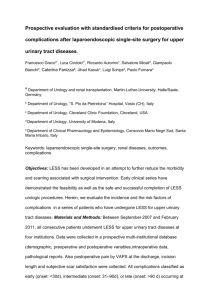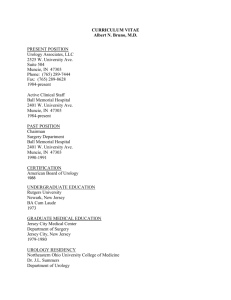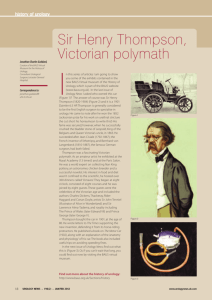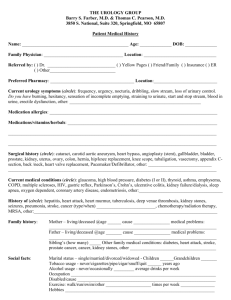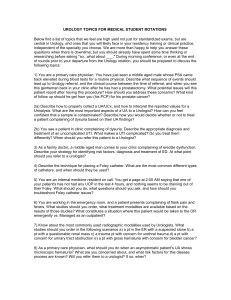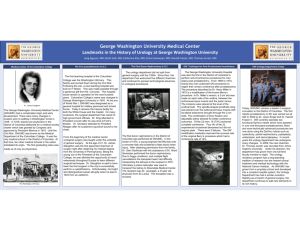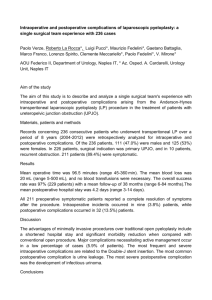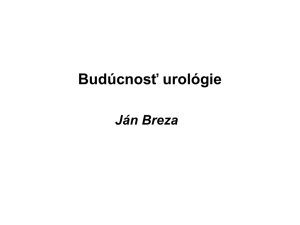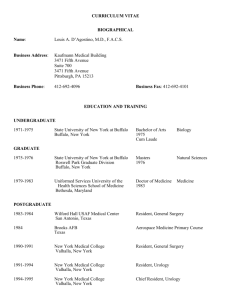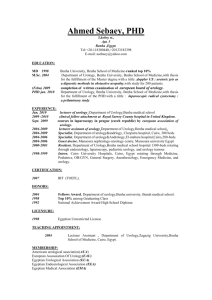Laparoendoscopic single-site partial nephrectomy: a multi
advertisement
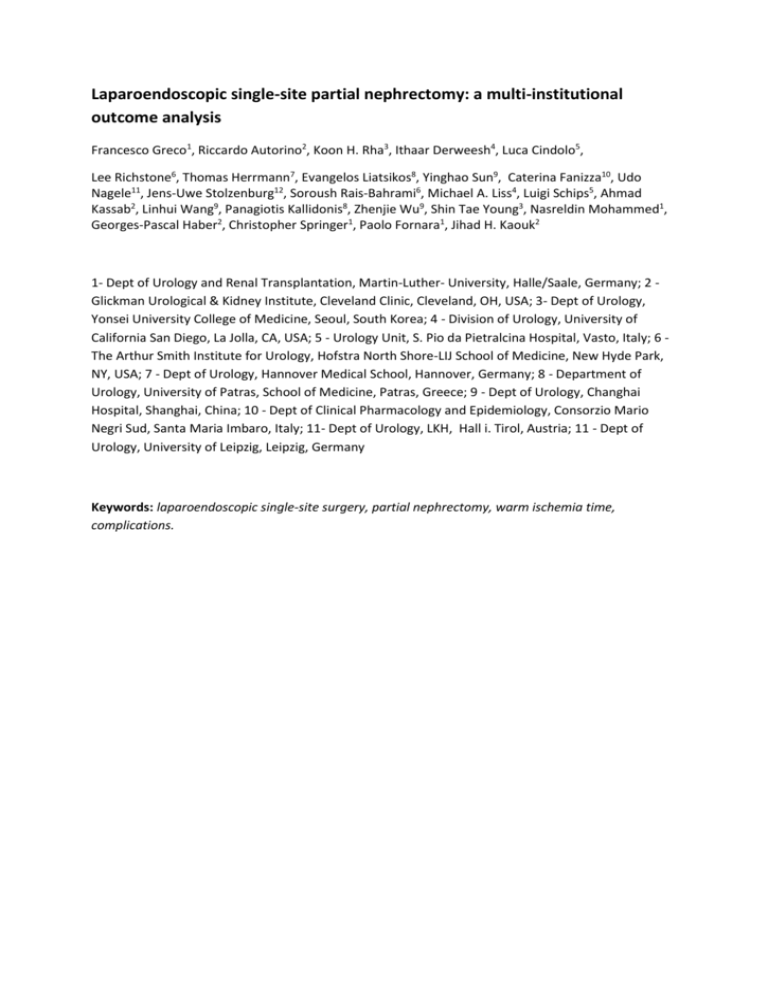
Laparoendoscopic single-site partial nephrectomy: a multi-institutional outcome analysis Francesco Greco1, Riccardo Autorino2, Koon H. Rha3, Ithaar Derweesh4, Luca Cindolo5, Lee Richstone6, Thomas Herrmann7, Evangelos Liatsikos8, Yinghao Sun9, Caterina Fanizza10, Udo Nagele11, Jens-Uwe Stolzenburg12, Soroush Rais-Bahrami6, Michael A. Liss4, Luigi Schips5, Ahmad Kassab2, Linhui Wang9, Panagiotis Kallidonis8, Zhenjie Wu9, Shin Tae Young3, Nasreldin Mohammed1, Georges-Pascal Haber2, Christopher Springer1, Paolo Fornara1, Jihad H. Kaouk2 1- Dept of Urology and Renal Transplantation, Martin-Luther- University, Halle/Saale, Germany; 2 Glickman Urological & Kidney Institute, Cleveland Clinic, Cleveland, OH, USA; 3- Dept of Urology, Yonsei University College of Medicine, Seoul, South Korea; 4 - Division of Urology, University of California San Diego, La Jolla, CA, USA; 5 - Urology Unit, S. Pio da Pietralcina Hospital, Vasto, Italy; 6 The Arthur Smith Institute for Urology, Hofstra North Shore-LIJ School of Medicine, New Hyde Park, NY, USA; 7 - Dept of Urology, Hannover Medical School, Hannover, Germany; 8 - Department of Urology, University of Patras, School of Medicine, Patras, Greece; 9 - Dept of Urology, Changhai Hospital, Shanghai, China; 10 - Dept of Clinical Pharmacology and Epidemiology, Consorzio Mario Negri Sud, Santa Maria Imbaro, Italy; 11- Dept of Urology, LKH, Hall i. Tirol, Austria; 11 - Dept of Urology, University of Leipzig, Leipzig, Germany Keywords: laparoendoscopic single-site surgery, partial nephrectomy, warm ischemia time, complications. Abstract Background: Laparoendoscopic single-site surgery (LESS) has been developed in an attempt to further reduce the surgical trauma associated with conventional laparoscopy. Partial nephrectomy (PN) represents a challenging indication for LESS. To report a large multi-institutional series of LESSPN and to analyze the predictors of outcomes after LESS-PN. Material and Methods: Consecutive cases of LESS-PN done between November 2007 and March 2012 at 11 participating institutions were included in this retrospective analysis. Each group performed LESS-PN according to its own protocols, entry criteria, and techniques. Demographic data, main perioperative outcome parameters, and perioperative complications were gathered and analyzed. A multivariable analysis was used to assess the factors predicting a short (< 20 min) warm ischemia time (WIT), the occurrence of postoperative complication of any grade, and a “favorable outcome”, arbitrarily defined as a combination of the following events: short WIT + no perioperative complications + negative surgical margins + no conversion to open/laparoscopy. Results and limitations: A total of 190 cases were included in this analysis. Mean renal tumor size was 2.6, and PADUA score 7.2. Median operative time was 170 min with a median EBL of 150 ml. A clampless technique was adopted in 70 cases (36.8%) and the median WIT was 16.5 min. PADUA score independently predicted length of WIT (low vs high score: OR 5.11, CI 1.50-17.41, p=0.009; intermediate vs high score: OR 5.13, CI 1.56-16.88, p=0.007). The overall postoperative complication rate was 14.7%. The adoption of a robotic LESS technique vs a conventional LESS one (OR 20.92, CI 2.66-164.64, p=0.003) and the occurrence of lower (≤ 250 ml) EBL (OR 3.60, CI 1.35-9.56, p=0.010) were found to be independent predictors of no postoperative complications of any grade. A “favorable outcome” was obtained in 83 cases (43.68%) and, on multivariate analysis, the only predictive factor of a “favorable outcome” resulted to be the PADUA score (low vs high score: OR 4.99, CI 1.98-12.59 p<0.001). Discussion: The present study represents the first large multi-institutional analysis specifically evaluating risk factors for outcomes of LESS-PN.In our study, the multivariable analysis demonstrated PADUA score to be the only factor significantly predicting a short WIT. According to our results, robotic surgery resulted to be more effective than conventional LESS for reducing the risk for surgical complications.One must note that the use of one additional trocar was applied in 61.6% of cases in the present series. Nevertheless, according to the current terminology, the use of an extra 3mmtrocar is still considered LESS. Conclusions: LESS-PN can be safely and effectively performed in experienced hands, but given a high likelihood of a single additional port. Overall, anatomical tumor characteristics as determined by the PADUA score are independent predictors of a favourable surgical outcome. Thus, patients presenting with low PADUA score tumors represent the best candidates for LESS-PN. The application of a robotic platform is likely to reduce the overall risk of postoperative complications.

